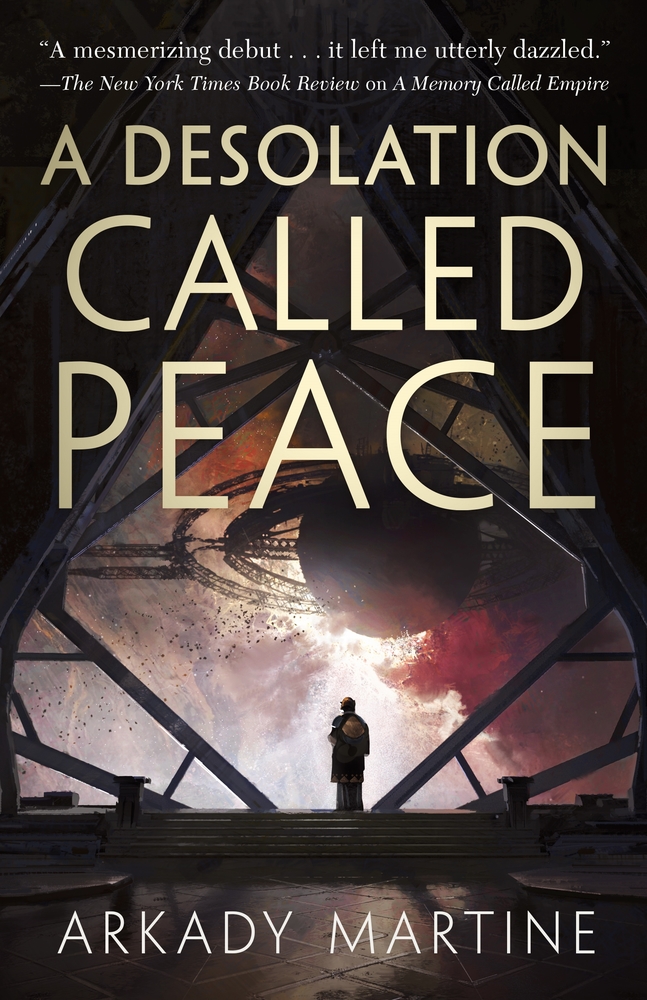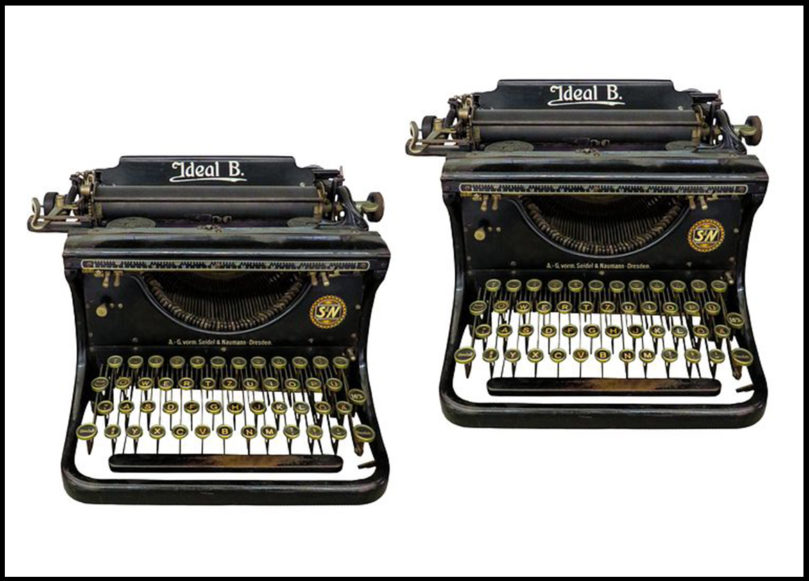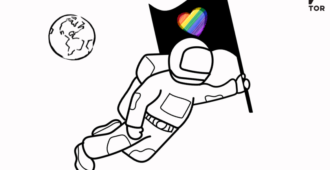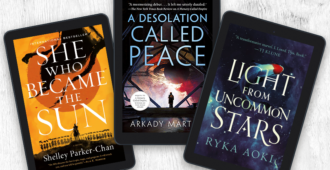 Aspiring authors, listen up! Arkady Martine, historian, city planner, and Hugo award-winning author of space operas A Memory Called Empire and its sequel—out next month—A Desolation Called Peace, has writing survival tips and the scoop on what it’s like to be married to a fellow writer.
Aspiring authors, listen up! Arkady Martine, historian, city planner, and Hugo award-winning author of space operas A Memory Called Empire and its sequel—out next month—A Desolation Called Peace, has writing survival tips and the scoop on what it’s like to be married to a fellow writer.
Is it a whirlwind of focus and productivity? Is it all procrastination and crying over word counts!? Find out below, and grab a copy of A Desolation Called Peace!
What’s it like being married to another writer?
Amazing. I recommend it, if you can swing it. Essentially – it’s like being married to anyone who shares your field, with all the delights and problems of working in the same area at the same time. We celebrate each other’s successes and support each other through publishing vicissitudes. Viv – my wife, whose books are currently with Orbit (the most recent is DREADFUL COMPANY, which has got the Paris catacombs and hellphones (think cellphones, but for calling Hell) in) – is my first reader and my physics-and-spaceflight-and-almost-everything-else consultant. But more importantly she’s my storytelling partner: because we’re both writers, we spend a lot of time talking about narrative, writing to each other, for each other. There are a lot of small easter eggs in my work which are for her, like a palimpsest or a secret gift. She makes me a better artist. She challenges me to write more clearly, with greater intensity of voice and character.
Also it’s pretty great to have someone who understands oh hell I’m on deadline, and who runs away with me to hotels for writing vacations. (A writing vacation is when you don’t get to leave the hotel room until you’ve got your words for the day, but someone else brings you food and makes the bed and there’s nothing around to distract you but your partner, who also has to make wordcount. We do this at least twice a year.)
How do you combat writer’s block?
This is a neat little trick to get back into writing a scene if you’ve been paused for a while, or if you can’t figure out how to start after a transition. It goes like this: describe – in detail, with precision – some architecture, someone’s clothing, something in your POV character’s visual field. Keep describing, but root that description in your POV character’s impressions and understanding of what they’re seeing. Keep describing until you figure out why your character would be looking so closely at that thing – and by then, you’re in the scene, you’ve got the voice, and you’ve probably done some accidental thematic and visual work to tie the story together.
This is, in fact, why my work is so goddamn full of descriptions of buildings and clothes and peculiar food items.
You can pull these setting-scaffolds out again in edits if they get redundant, but I usually leave them in – they’re less filigree than you’d think. They become fairly central to characterization – how does this character notice the world they move through?
Pre-Order Your Copy of A Desolation Called Peace:












I can relate so much! Although my partner and I are not writers we both work in the library field. We can basically sync vacation with professional development conferences as well as bond over reading, technology and work life. He works in a different library with a different track than me, but a lot of what we do is comparable. We even had an overlapping period of graduate school (different schools) so there was often study nights and borrowing textbooks. It is nice to work in the same field. Not great for some things but overall it is great.